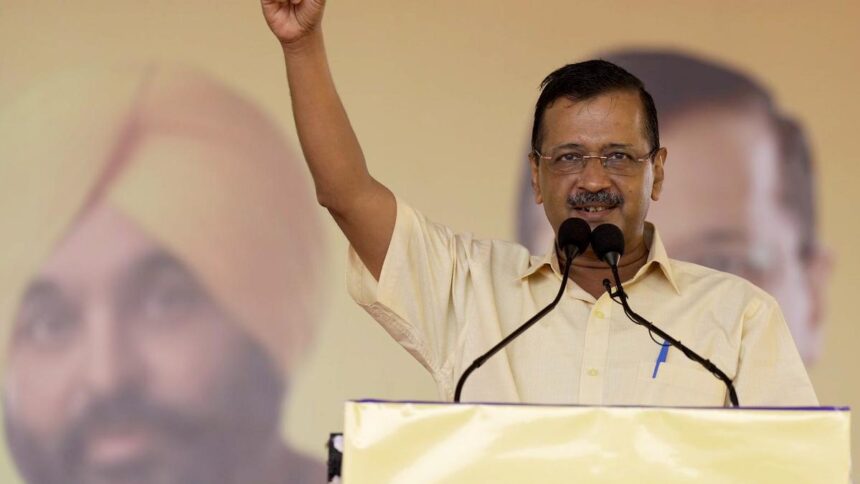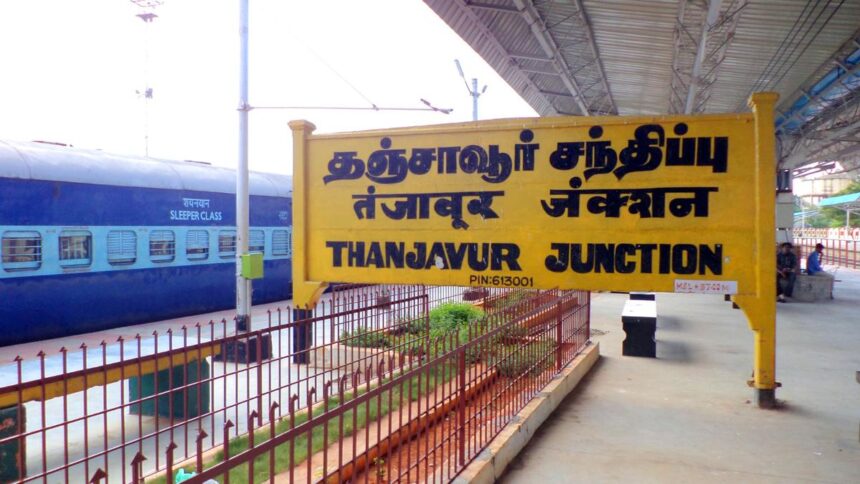With passenger numbers surging on the newly opened Yellow Line, the Bangalore Metro Rail Corporation Limited (BMRCL) has installed platform safety railings at the busy RV Road interchange station from Wednesday.
The move comes less than two weeks after the Yellow Line connecting R.V. Road to Bommasandra began operations on August 11. The corridor has seen a sharp increase in ridership, with R.V. Road emerging as a key interchange station. After Nadaprabhu Kempegowda Interchange (Majestic), R.V. Road has now become the second station in the city to be fitted with such railings.
“The decision was prompted by safety concerns. With the commencement of the Yellow Line, passenger movement at R.V. Road has increased significantly. This is an interchange station where queues build up quickly, particularly during peak hours. The installation of railings is a preventive measure to ensure commuters do not accidentally step onto electrified tracks,” a senior BMRCL official told The Hindu.
BMRCL recorded a peak ridership of 10.48 lakh on August 11, the first day of operations, following the inauguration of the 19.15-km Yellow Line by Prime Minister Narendra Modi.
Another senior official explained that the steel hand railings have been strategically placed along platform edges where train doors open. “The objective is is to safeguard passengers from accidental falls and to prevent trespassing onto tracks, which can disrupt services and pose grave risks. These railings provide an essential layer of protection,” the official added.
Commuters welcome move
Ganesh Kumar, a passenger who frequently travels from R.V. Road to Bommasandra, said the railings were much needed. “Since the Yellow Line began operations, the station has become very crowded. People push each other while queueing to board the trains, and it feels dangerous at times. These railings will help manage the crowd and keep people safe,” he said.
Photography and videography prohibited
The BMRCL has put up boards across platforms prohibiting photography and videography. “We have noticed that many commuters attempt to take selfies and record videos near the platform edge as trains arrive, which is extremely dangerous. These restrictions are meant to prevent such risky behaviour and ensure passenger safety,” the official added.
In February 2024, BMRCL installed platform safety railings at the Kempegowda Interchange after repeated incidents of passengers accidentally or deliberately entering the electrified tracks. The Namma Metro authorities have since been evaluating the effectiveness of the move at other high-footfall stations.
BMRCL has already initiated steps to introduce platform screen doors (PSDs) across its upcoming network expansions. Tenders have been awarded for the installation of PSDs on the Pink Line, the Blue Line Phase 2A (Central Silk Board–K.R. Pura), and the Blue Line Phase 2B (K.R. Pura–airport). According to the agreement, 13 underground stations will be fitted with full-height PSDs, while 37 elevated or at-grade stations will receive half-height platform screen gates (PSGs).
PSDs are considered global best practice in metro safety, according to officials. “By physically separating platforms from tracks, they not only prevent accidental falls and overcrowding risks but also improve train efficiency through better signalling and crowd management. At present, only Delhi and Chennai metros are equipped with PSDs,” official explained.
Published – August 20, 2025 10:02 pm IST


















